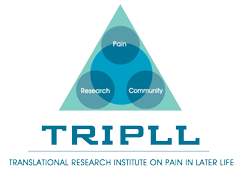OBJECTIVE:
Nonspecific chronic low back pain (CLBP) is a frequent medical condition among middle-aged and older adults. Its detrimental consequences for functional ability and quality of life are well known. However, less is known about associations of chronological age with disability and well-being among CLBP patients. Coping with pain may be harder with advancing age due to additional age-associated losses of physical, sensory, and other resources, resulting in higher disability and lower quality of life. Alternatively, older patients may feel less impaired and report higher quality of life than younger patients because the experience of chronic pain may be better anticipated and more “normative” in old age.
METHODS:
We investigated an age-heterogeneous sample of 228 CLBP patients (mean age = 59.1 years, SD = 10.2 years, range 41-82 years). Our outcomes were pain intensity, pain disability (as assessed by self-reported activity restrictions and performance-based tests), and measures of quality of life (health-related quality of life: SF-12 physical and mental health; well-being: anxiety, depression, perceived control over life, affective distress).
RESULTS:
Although older patients had higher performance-based disability, they scored higher on mental health and on most measures of well-being than younger patients.
CONCLUSIONS:
Our findings provide evidence for a “paradoxical” pattern of age effects in CLBP patients and are thus in line with other studies based on nonclinical samples: Although disability in CLBP patients increases with advancing age, indicators of quality of life are equal or even higher in older patients.
Markus Wettstein, Wolfgang Eich, Christiane Bieber, Jonas Tesarz. Pain Intensity, Disability, and Quality of Life in Patients with Chronic Low Back Pain: Does Age Matter?, Pain Medicine, pny062, https://doi.org/10.1093/pm/pny062
Click here to read full article.
